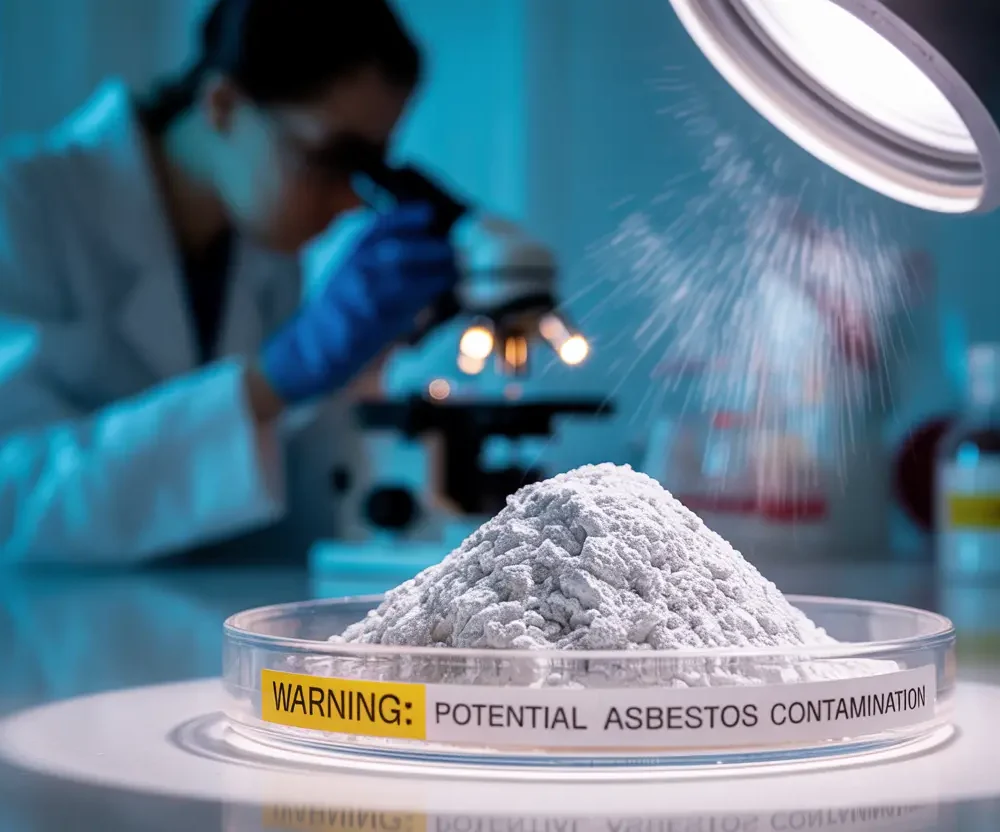
Last Updated on July 4, 2025 by Beth Skwarecki
You cannot be too sure about the products that you use. Some cosmetic products contain harmful chemicals, such as talc powder, which can pose health risks that you might not be aware of. Asbestos is a mineral found in talc and is a known carcinogen. Manufacturers of talc powder are almost never thorough in doing their testing. In fact, Johnson & Johnson (J&J) faced over 61,000 asbestos lawsuits in August 2024 after it was discovered that their popular Johnson’s Baby Powder product contained asbestos.
The discovery raises big health and safety questions. What should one know before applying these products? It is important to talk about the implications of talc use, especially when you think about your options going forward.
If you believe that your use of cosmetics led to you contracting an illness, you could file a civil product liability claim. To have the highest chance of a successful claim, you can hire a cosmetic talc asbestos lawyer to investigate your case.
Let’s get an overview regarding cosmetic talc and asbestos exposure.
Understanding Cosmetic Talc: What It Is and How It’s Used
Cosmetic talc is normally found in most beauty products. It is a soft mineral that is usually an ingredient in many blushers, powders, and foundations. It can soak up moisture and change the texture of the skin.
Talc can be used to prevent your makeup from becoming hard, dry, and rough. A makeup with talc as its ingredient feels soft and smooth. When you make use of these products, your skin is probably enjoying the oil-absorbing qualities of talc for that fresh look throughout the day.
Talc is also a filler so the companies can make the product light without compromising quality.
It should be mentioned that talc serves several purposes in cosmetic applications. Where the talc was sourced and its purification affect the safety and the efficacy of the products you choose. Always check the product labels for more information.
The Risks of Asbestos Contamination in Talc Products
There isn’t a lot of convincing proof that cosmetic talc is harmful, but you should be careful if it has asbestos in it.
People who buy cosmetic goods should know that talc and asbestos can be found in the same natural deposits. Incorrect testing or failure to test a product exposes consumers to asbestos exposure risks.
Once released into the air, these fibers can cause a health hazard by inhalation or simply landing on one’s skin. Should such an opportunity ever present itself, make it a point to patronize those brands that willingly provide you with information about their source and test.
Health Concerns Linked to Talc Use
Although talc has been eminently used in lots of cosmetic preparations, there exist some concerns for health safety. One of the major concerns is possibly linking talc with respiratory disorders.
When talc powders are used, tiny particles disperse into the air and are perhaps inhaled, leading to irritation and several other complications.
Some studies also suggest the possibility that ovarian cancer in the genital area may sometimes be linked with extended use of talc.
These studies are not conclusive, but the situation must be kept in consideration, and alternative methods should be explored. Picking and choosing compounds will minimize risks without harming health.
Ask a doctor or consult other healthcare providers if you are unable to find out a product’s main ingredients.
Regulatory Standards and Safety Measures
With rising concerns regarding the safety of talc in cosmetics, regulatory standards and safety measures have become prime considerations for protecting the consumer.
Before they are sold in the US, the FDA does not review cosmetic items. It merely checks to see if cosmetic items are safe. The product manufacturer is responsible for proving that the product is safe for its intended purpose. Also, it does not include any dangerous substances, such as asbestos.
Some manufacturers test the talc themselves on a voluntary basis to keep it asbestos-free. Industry organizations also issue codes of practice geared towards the safety of the industry.
The industry uses these methods to keep their customers safe. Remember that you, too, have a part to play in keeping yourself safe by reading labels and looking at the ingredients in the things you buy.
Making Informed Choices: Talc Alternatives and Recommendations
If you’d prefer to make safer choices in your personal care routine, where talc and some possible risks are concerned, you might want to check out some talc alternatives.
Look for products that use cornstarch for moisture absorption and friction reduction. An equally good choice is arrowroot powder that lends a silky feel without additives or toxins.
Natural clays like kaolin or bentonite work well to absorb oil and could be used in face powders. Baking soda is another product that can be used as a substitute when it comes to body powders. It is great for neutralizing unwanted odors.
See to it that you read the ingredient label so as to prevent you from using products that contain asbestos or other harmful chemicals.

Beth is Cloudmineinc’s senior health editor and a certified personal trainer. She has over 10 years experience as a science journalist and is the author of two books. She deadlifts over 315 lbs.